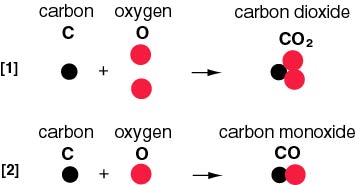

Morecommonly, in the laboratory, radical chemistry is initiated at temperaturesbelow 100 oC by adding a few percent of a substance (called an initiator) which has a relatively weak bond.
#Carbon reactivity free
Generation of Free Radicals by Homolysis of Bonds

This bond has abond dissociation energy of 58 kcal/mol, so that a rather high temperature isrequired in order to dissociate chlorine molecules fast enough to effectivelyinitiate the chain mechanism. In the case of the chlorination ofmethane, the reaction can be carried out thermally at rather high temperatures(250 – 300 oC) by the homolytic cleavage of the Cl-Cl covalentbond (Scheme 2). Inthe (presumably) familiar case of radical chain reactions (such as halogenationof alkanes), radicals are typically generated by either thermal orphotochemical homolytic bond cleavage. Species with all electronspaired have only one spin state and are termed singlets. In the same way, chemical species with two unpaired electrons arecalled triplets, since there arethree distinguishable spin states of such a system. Free radicals are termed spin doublets because of the existence of these two discretestates. Theodd electron can have either an a or b spin, so there are two spin states which are energetically distinguishablein the presence of a magnetic field, but which, in the absence of such anexternal field, are isoenergetic. The sp 2 hybridized carbon atomand the three hydrogens are coplanar and the unpaired (odd) electron occupies a2p carbon atomic orbital (AO), here arbitrarily designated as 2p z.This singly occupied orbital is of special importance to free radical chemistryand is often abbreviated as the SOMO (singly occupied molecular orbital). In the important case(for organic chemistry) of the methyl radical, the radical center is trivalentand trigonally hybridized (Scheme 1). The reported methodology for the regulated growth and selective nitrogen doping of CNTs presents new ways to study systematically the influence of nanocarbon composition and structure on chemical and electrochemical reactivity for a host of applications.Free radicals can be defined aschemical species which have a single unpaired electron.

Iodimetric titrations were used to gauge the number of reducing sites on as-prepared N-CNTs, representing the first report of nitrogen doping as a means to deterministically effect the chemical reactivities of carbon nanotubes. The ratio of the D and G bands’ integrated intensities scaled linearly with nitrogen content.

First-order Raman spectra were fit with five peaks that vary in intensity and width with nitrogen content. N 1s XPS spectra show three principle types of nitrogen coordination (pyridinic, pyrolic, and quaternary), with the pyridinic-like fraction selectively increased from 0.0 to 4.5 at.%. XPS analysis indicates a shift in and broadening of the C 1s spectra track with increasing disorder induced by selective nitrogen doping. XPS and Raman microscopy were used to assess quantitatively the compositional and structural properties of the nitrogen-doped carbon nanotubes (N-CNTs). Carbon nanotubes (CNTs) doped with a range of nitrogen contents (0–10 at.%) were prepared via a floating catalyst CVD method using ferrocene, NH 3, and xylene or pyridine.


 0 kommentar(er)
0 kommentar(er)
